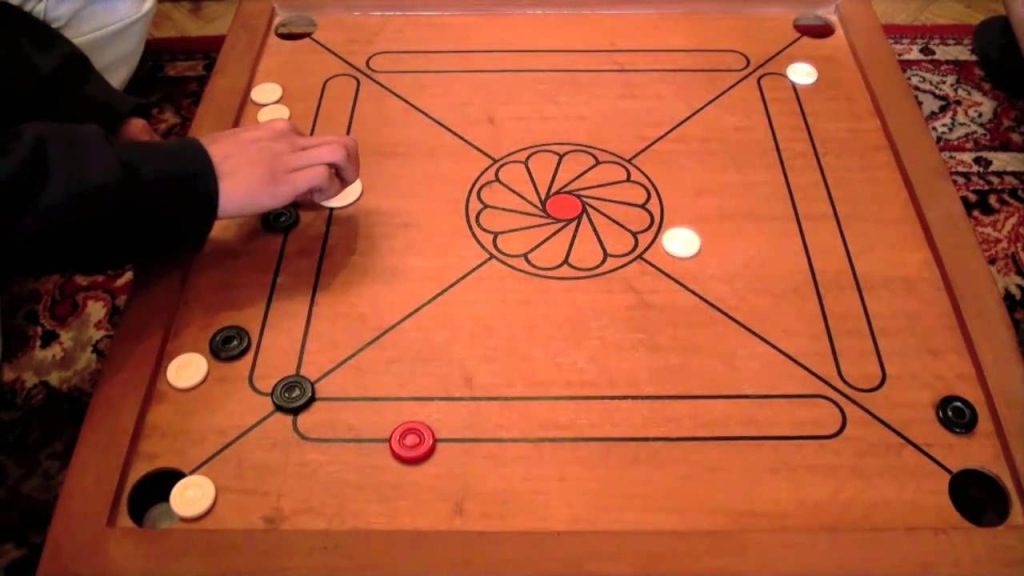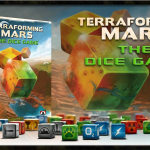Introduction
Vintage Carrom: The Carrom game, often referred to as the “strike and pocket” game, holds a special place in the hearts of many enthusiasts around the world. This tabletop game, which originated in India, has a rich history and cultural significance. With its simple rules and engaging gameplay, Carrom has transcended generations, providing endless hours of entertainment. One of the most cherished aspects of Carrom is its vintage game boards. These boards are not just playing surfaces; they are relics of the past, each with its unique story and charm. In this comprehensive exploration, we delve into the world of vintage Carrom game boards, examining their history, craftsmanship, variations, and enduring appeal.
The Origins And History Of Carrom

Carrom is believed to have originated in India around the 18th century, although some suggest it could be even older. The game’s roots are somewhat shrouded in mystery, with various theories suggesting its invention by Indian maharajas or its evolution from similar games played in ancient times. Regardless of its exact origins, Carrom quickly became a popular pastime across the Indian subcontinent, enjoyed by people of all ages and social backgrounds.
The game spread to other parts of Asia, including Nepal, Pakistan, Bangladesh, Sri Lanka, and even to the Middle East and Europe, thanks to trade and cultural exchanges. Each region adapted the game to its local customs and preferences, resulting in various styles and rules. Despite these regional variations, the core gameplay of Carrom remained consistent, involving players using a striker to flick small discs into corner pockets on a square board.
The Art And Craftsmanship Of Vintage Carrom Boards
Vintage Carrom boards are a testament to the craftsmanship and attention to detail that characterized traditional board game manufacturing. Unlike modern mass-produced boards, vintage Carrom boards were often handcrafted by skilled artisans. These craftsmen used high-quality materials such as seasoned wood, typically from trees like rosewood or teak, to ensure durability and a smooth playing surface.
The board’s surface was meticulously polished and coated to create an ideal friction level for the smooth movement of the Carrom men and striker. The frame of the board was often adorned with intricate carvings and designs, reflecting the cultural and artistic heritage of the region where it was made. These decorative elements not only enhanced the aesthetic appeal of the board but also made each piece unique.
In addition to wood, vintage Carrom boards sometimes featured inlays of ivory, bone, or metal, adding to their elegance and value. The corner pockets were typically made of netting or leather, providing a soft catch for the Carrom men. The striker and Carrom men themselves were also crafted with care, often from the same high-quality wood or ivory, ensuring a consistent playing experience.
Variations Of Vintage Carrom Boards
As Carrom spread to different regions, various styles and variations of the game emerged. These differences are often reflected in the design and construction of vintage Carrom boards. Some of the notable variations include:
Indian Carrom Boards
Indian Carrom boards are the most widely recognized and played version of the game. These boards are known for their large size, typically measuring 29 inches by 29 inches, with a playing surface of 24 inches by 24 inches. The boards feature simple yet elegant designs, with clear markings for the center circle, baselines, and arrows pointing towards the pockets. The Indian version of Carrom often includes elaborate carvings and inlays, showcasing the rich artistic traditions of the country.
Sri Lankan Carrom Boards
Sri Lankan Carrom boards are similar in size and design to Indian boards but often have a slightly different aesthetic. The boards are usually made from high-quality wood and feature intricate hand-painted designs or carvings. Sri Lankan Carrom boards are known for their smooth playing surfaces and attention to detail, making them a favorite among serious players.
Burmese Carrom Boards
Burmese Carrom boards, also known as “Burmese billiards,” are a unique variation of the game. These boards are typically smaller than Indian or Sri Lankan boards and feature a slightly different pocket design. The corners are rounded, and the pockets are often smaller, requiring more precision and skill. Burmese Carrom boards are often decorated with traditional Burmese motifs and designs, reflecting the cultural heritage of the region.
European Carrom Boards

Carrom boards made in Europe during the early 20th century often reflect the influences of Western design and craftsmanship. These boards are usually larger and heavier, with a more solid construction. The playing surface is often made from high-quality plywood, and the frame is adorned with metal inlays or decorative carvings. European Carrom boards are prized for their durability and elegant design, making them highly sought after by collectors.
The Enduring Appeal Of Vintage Carrom Boards
Vintage Carrom boards hold a special place in the hearts of collectors and enthusiasts for several reasons. Their historical significance, craftsmanship, and unique designs make them valuable pieces of cultural heritage. Collecting vintage Carrom boards is not just about owning a game; it is about preserving a piece of history and celebrating the artistry and skill of the craftsmen who created them.
One of the main reasons vintage Carrom boards continue to be popular is their nostalgic appeal. For many people, playing Carrom on a vintage board brings back fond memories of childhood, family gatherings, and friendly competitions. The tactile experience of playing on a well-crafted wooden board, with its smooth surface and precise markings, adds to the overall enjoyment of the game.
Moreover, vintage Carrom boards are often seen as works of art. The intricate carvings, hand-painted designs, and use of high-quality materials make each board a unique and beautiful piece. Collectors and enthusiasts appreciate the craftsmanship and attention to detail that went into creating these boards, making them valuable additions to any collection.
Caring For And Preserving Vintage Carrom Boards
To maintain the beauty and functionality of vintage Carrom boards, proper care and preservation are essential. Here are some tips for keeping your vintage Carrom board in excellent condition:
Cleaning And Polishing
Regular cleaning is crucial to preserve the surface of the board and prevent dust and dirt from accumulating. Use a soft, dry cloth to wipe down the board after each use. For deeper cleaning, a slightly damp cloth with a mild wood cleaner can be used. Avoid using harsh chemicals or abrasive materials, as they can damage the wood and finish.
Polishing the board periodically with a high-quality wood polish can help maintain its luster and protect the surface. Be sure to use a polish that is suitable for the type of wood used in your board.
Storing Properly
Proper storage is essential to prevent damage to your vintage Carrom board. Store the board in a cool, dry place away from direct sunlight, which can cause the wood to warp or fade. If possible, store the board flat to prevent any stress on the frame or playing surface.
When not in use, cover the board with a cloth or dust cover to protect it from dust and dirt. Avoid placing heavy objects on top of the board, as this can cause dents or scratches.
Handling With Care
Handle your vintage Carrom board with care to prevent damage. When moving the board, lift it by the frame rather than the playing surface to avoid putting stress on the wood. Be gentle when placing the Carrom men and striker on the board to prevent scratches or dents.
Regularly inspect the board for any signs of wear or damage. Address any issues promptly to prevent further deterioration. If necessary, seek the assistance of a professional restorer who specializes in antique wooden items.
The Market For Vintage Carrom Boards
The market for vintage Carrom boards is thriving, with collectors and enthusiasts seeking out rare and unique pieces. The value of a vintage Carrom board can vary widely depending on factors such as age, condition, craftsmanship, and provenance. Boards made by renowned craftsmen or from specific regions are often more valuable and sought after.
Auctions, antique shops, and online marketplaces are common places to find vintage Carrom boards for sale. When purchasing a vintage Carrom board, it is essential to do your research and verify the authenticity and condition of the piece. Look for signs of quality craftsmanship, such as smooth playing surfaces, intricate carvings, and well-made pockets. Be wary of reproductions or boards in poor condition, as they may not hold their value over time.
Modern Revivals Of Vintage Carrom Boards
In recent years, there has been a resurgence of interest in vintage and handcrafted board games, including Carrom. Several manufacturers and artisans are reviving the tradition of creating high-quality Carrom boards using traditional techniques and materials. These modern revivals pay homage to the craftsmanship and design of vintage boards while incorporating contemporary elements and innovations.
Modern vintage-style Carrom boards are often made from sustainably sourced wood and feature detailed carvings and inlays. These boards combine the charm and elegance of vintage designs with the durability and precision of modern manufacturing. For enthusiasts who appreciate the beauty and craftsmanship of vintage Carrom boards but prefer a new and unused piece, these modern revivals offer the best of both worlds.
The Cultural Significance Of Carrom

Carrom is more than just a game; it is a cultural phenomenon that has brought people together for generations. In many parts of the world, Carrom is played in homes, community centers, and clubs, fostering a sense of community and camaraderie. The game’s simple rules and inclusive nature make it accessible to people of all ages and backgrounds.
In India and other South Asian countries, Carrom is often played during festivals, family gatherings, and social events. It is a common sight to see people gathered around a Carrom board, laughing, strategizing, and enjoying each other’s company. The game’s popularity extends beyond casual play, with organized tournaments and competitions held at local, national, and international levels.
Carrom has also made its mark in popular culture, appearing in films, television shows, and literature. Its cultural significance is reflected in the way it is depicted as a symbol of togetherness, skill, and tradition. The enduring appeal of Carrom and its vintage boards is a testament to the game’s timeless charm and the joy it brings to players worldwide.
Conclusion
The vintage Carrom game board is a beloved artifact that encapsulates the history, craftsmanship, and cultural significance of the Carrom game. From its origins in India to its spread across the globe, Carrom has captivated generations with its engaging gameplay and social aspects. Vintage Carrom boards, with their intricate designs and high-quality materials, are treasured pieces that celebrate the artistry and skill of traditional craftsmanship.
Whether you are a collector, an enthusiast, or simply someone who appreciates the beauty and nostalgia of vintage games, the vintage Carrom board offers a unique and enriching experience. By preserving and celebrating these boards, we honor the rich heritage of Carrom and ensure that future generations can continue to enjoy this timeless game.










